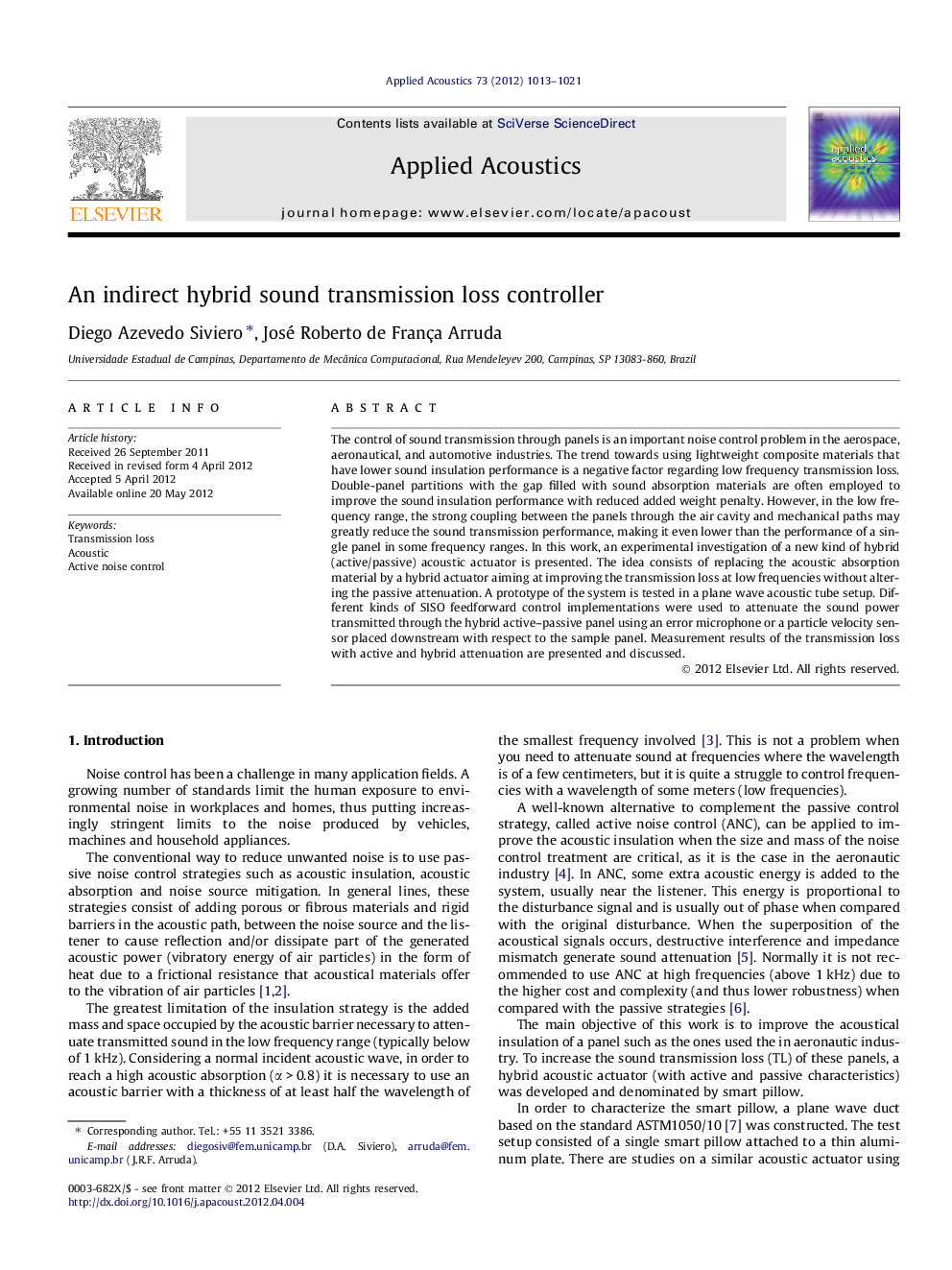| کد مقاله | کد نشریه | سال انتشار | مقاله انگلیسی | نسخه تمام متن |
|---|---|---|---|---|
| 761338 | 896620 | 2012 | 9 صفحه PDF | دانلود رایگان |

The control of sound transmission through panels is an important noise control problem in the aerospace, aeronautical, and automotive industries. The trend towards using lightweight composite materials that have lower sound insulation performance is a negative factor regarding low frequency transmission loss. Double-panel partitions with the gap filled with sound absorption materials are often employed to improve the sound insulation performance with reduced added weight penalty. However, in the low frequency range, the strong coupling between the panels through the air cavity and mechanical paths may greatly reduce the sound transmission performance, making it even lower than the performance of a single panel in some frequency ranges. In this work, an experimental investigation of a new kind of hybrid (active/passive) acoustic actuator is presented. The idea consists of replacing the acoustic absorption material by a hybrid actuator aiming at improving the transmission loss at low frequencies without altering the passive attenuation. A prototype of the system is tested in a plane wave acoustic tube setup. Different kinds of SISO feedforward control implementations were used to attenuate the sound power transmitted through the hybrid active–passive panel using an error microphone or a particle velocity sensor placed downstream with respect to the sample panel. Measurement results of the transmission loss with active and hybrid attenuation are presented and discussed.
► An active acoustic pillow aiming at increasing the sound transmission loss (TL) is developed.
► The TL of a panel with the insertion of the pillow is measured inside a plane wave duct.
► The active noise control is performed using frequency and time-domain FX-LMS.
► Either a microphone or a particle velocity sensor can be used as the error sensor.
► The TL obtained for different controllers and error sensors is compared.
Journal: Applied Acoustics - Volume 73, Issue 10, October 2012, Pages 1013–1021